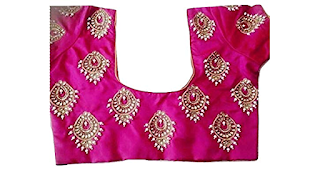Unveiling the Silk Secret: The Surprising Way to Create Silk Without Silkworms!
Silk is a luxurious fabric that has been highly valued for centuries. It is known for its soft texture, natural luster, and excellent drapability. However, the traditional process of making silk involves the use of silk worms, which may not be appealing to everyone. In this article, we will explore the possibility of making silk without silk worms, and whether it is a viable alternative.
Introduction
Silk production has a long history, dating back to ancient China. Silk worms, the larval stage of the silk moth, are responsible for spinning the silk threads. These worms feed on mulberry leaves, and their cocoon is made up of a single strand of silk that can be up to 1,000 meters long. Harvesting silk involves boiling the cocoons to soften and unwind the silk strands.
The Traditional Process
Traditionally, silk production requires a significant amount of labor and resources. Silk farmers carefully nurture silk worms, providing them with a constant supply of mulberry leaves until they reach maturity. Once the silk worms have completed their life cycle and spun their cocoons, they are harvested and the silk threads are extracted. This process can be time-consuming and requires expertise to ensure the quality of the silk.
Alternatives to Silk Worms
While silk worms have been the primary source of silk for centuries, there are alternative methods that do not involve the use of these insects. One such method is known as "peace silk" or "Ahimsa silk." This ethical approach to silk production allows the silk worms to complete their life cycle and emerge from their cocoons as moths before the silk is harvested.
Another method of producing silk without silk worms is to use synthetic fibers. Scientists have developed advanced technologies and materials that mimic the properties of silk, such as synthetic silk or nylon. These alternatives offer similar characteristics to natural silk but do not require the use of silk worms in the production process.
Challenges and Considerations
While the concept of producing silk without silk worms may seem appealing, there are certain challenges and considerations to keep in mind.
One challenge is the availability of alternative materials. Synthetic silk or nylon may not provide the same natural and luxurious feel as traditional silk. Additionally, the production of synthetic fibers can have environmental implications, as they are derived from non-renewable resources.
Another consideration is the impact on traditional silk farmers. Silk production is a livelihood for many farmers, and a shift towards alternative methods could potentially disrupt their source of income and traditional way of life.
Conclusion
While it is technically possible to produce silk without silk worms, the availability and suitability of alternative materials are factors that need to be considered. Traditional silk production remains the most widely used method, as it ensures the highest quality and authentic feel of silk. However, advancements in technology may continue to provide viable alternatives for those seeking ethical and sustainable options.
So, the next time you admire a beautiful piece of silk fabric, you can appreciate the intricate process and the contribution of silk worms in creating this luxurious material.



Comments
Post a Comment